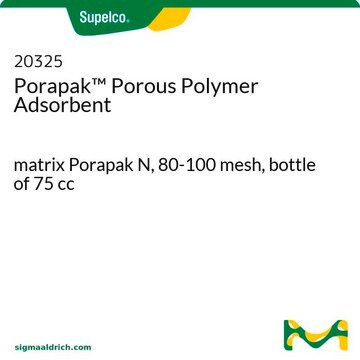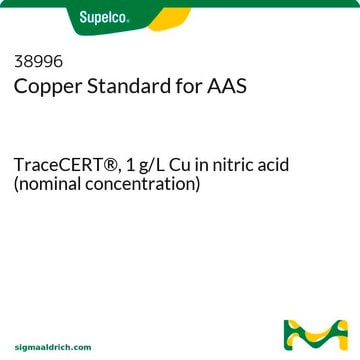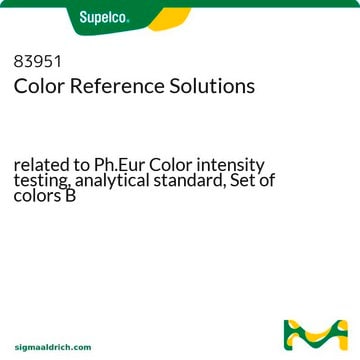10307
HayeSep® Porous Polymer Adsorbent
matrix HayeSep S, 80-100 mesh, bottle of 75 cc
About This Item
Productos recomendados
formulario
solid
envase
bottle of 75 cc
fabricante / nombre comercial
Hayes Separation Inc
Parámetros
250 °C temp. limit
técnicas
gas chromatography (GC): suitable
superficie
~583 m2/g
matriz
HayeSep S
tamaño de partícula
80-100 mesh
densidad
~0.33 g/mL (free fall density)
¿Está buscando productos similares? Visita Guía de comparación de productos
Descripción general
For more information about any of our adsorbents, please visit sigma-aldrich.com/adsorbents
Aplicación
Información legal
Código de clase de almacenamiento
13 - Non Combustible Solids
Clase de riesgo para el agua (WGK)
WGK 3
Punto de inflamabilidad (°F)
Not applicable
Punto de inflamabilidad (°C)
Not applicable
Equipo de protección personal
Eyeshields, Gloves, type N95 (US)
Choose from one of the most recent versions:
Certificados de análisis (COA)
Sorry, we don't have COAs for this product available online at this time.
If you need assistance, please contact Atención al cliente
¿Ya tiene este producto?
Encuentre la documentación para los productos que ha comprado recientemente en la Biblioteca de documentos.
Nuestro equipo de científicos tiene experiencia en todas las áreas de investigación: Ciencias de la vida, Ciencia de los materiales, Síntesis química, Cromatografía, Analítica y muchas otras.
Póngase en contacto con el Servicio técnico








